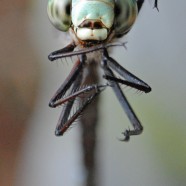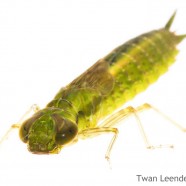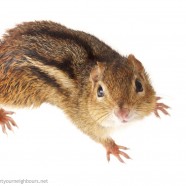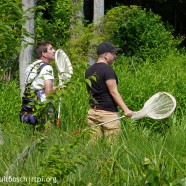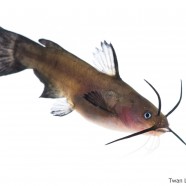Canada Darner (Aeshna canadensis)
Have you ever taken an up close look at a dragonfly? We did at this Canada Darner (Aeshna canadensis) we found patrolling the edge of the pond at College Lodge around this time last year. As you can see, Canada Darners have large compound eyes, providing excellent vision needed for hunting on the fly. While you are enjoying the autumn-like days soon to come, keep an eye out for this spectacular dragonfly species and more emerging and migrating through the area.
Read MoreCommon Green Darner (Anax junius) dragonfly nymph
Extraterrestrial? No, and at this point not even terrestrial – this dragonfly nymph looks to be a Common Green Darner (Anax junius) which we found during the RTPI/SUNY College Lodge BioBlitz.
Read MoreEastern Chipmunk (Tamias striatus)
Here’s a familiar neighbor from many of our backyards, the Eastern Chipmunk (Tamias striatus). This one is wet from the rain on the second day of the RTPI/SUNY College Lodge BioBlitz. It was more “cooperative” (and I use that word loosely) than the three species of mice we captured that morning. None of them seemed to want to be released back into that pouring rain, though…
Read MoreRTPI/SUNY College Lodge BioBlitz completed
One week ago today we were readying ourselves for the 3:00PM kickoff of the RTPI/SUNY College Lodge BioBlitz. It took place at the SUNY College Lodge Nature Preserve in Brocton on about 200 acres of beautiful habitat on the escarpment near Lake Erie. A BioBlitz is a 24-hour race to identify as many species of plants and animals of all kinds on a given site – this can be anything from an entire town, a river or lake, or a bounded property. We had a few dozen experts join us over the Friday and Saturday time period with specialties ranging from ants, spiders and other small insects,...
Read MoreBlack Bullhead (Ameiurus melas) & Brown Bullhead (Ameiurus nebulosus)
These are a couple of entirely different catches from the RTPI/SUNY College Lodge BioBlitz photographed in Meet Your Neighbours form by Twan – the Black Bullhead (Ameiurus melas) and the Brown Bullhead (Ameiurus nebulosus). In this case I can assure you the objects are much smaller than they appear which makes their splendid features, unseen by the human eye in hand, all the more startling. Can you see ALL the barbels?
Read More



